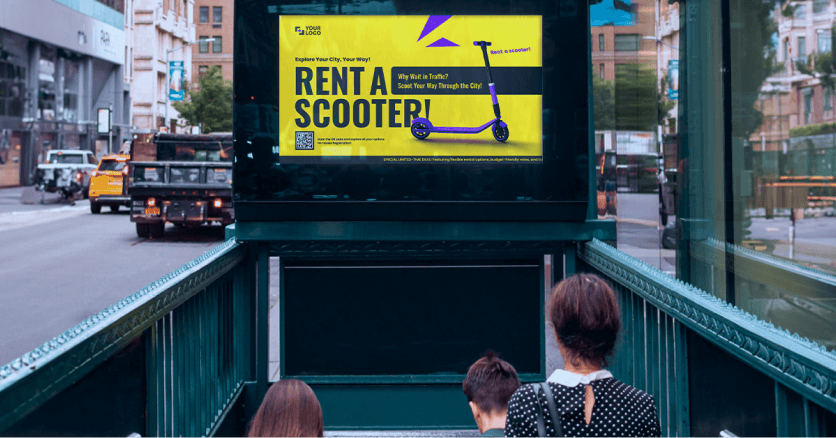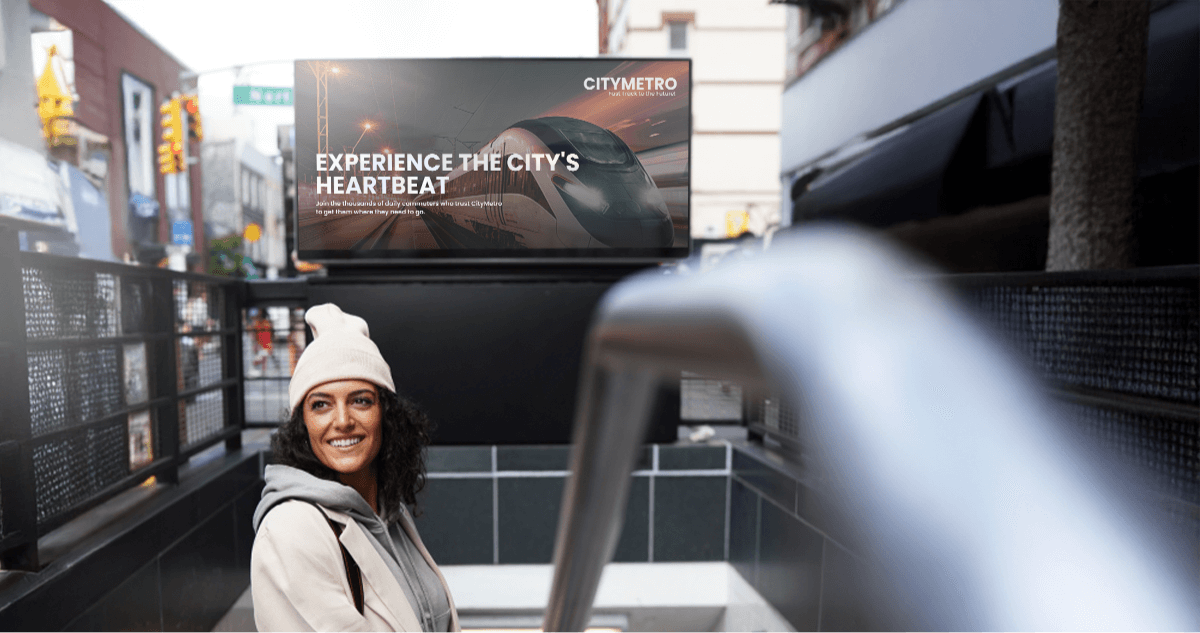Technology is moving fast, and people are quick to adapt, but this doesn’t always align with our urban environments, creating a growing disconnect between the city and its residents.
With studies showing that digital displays capture 400% more views than old-fashioned posters, it’s no wonder that more and more cities around the world are turning to digital signage as a method of advertising and creating a more connected community.
From promoting small businesses to sharing public service messages, these digital signage screens are succeeding in building modern, better-connected cities with higher levels of engagement, especially in times when everything is moving extremely fast. They can spotlight local small businesses, remind passersby to stay safe, or encourage them to get more involved in their communities.
In this article, we’ll learn in full detail how digital signage is helping cities to promote local initiatives, support small businesses, and offer better public services while creating a more connected urban environment.
What cities and businesses get from this type of technology
Often, digital signage gives the idea that it can be used only for ads, but this is not true. Beyond that, digital signage can bring a wide range of benefits to both cities and businesses. First of all, it’s a cost-effective way for a city to keep its citizens informed and connected. Secondly, it can improve overall communication and modernize public spaces, making them more accessible to the public and helping local businesses in a more dynamic way to promote their products.
For example, instead of printing hundreds of posters for a campaign, cities can instantly upload content to digital screens across multiple locations with just a few clicks. Local stores can run time-sensitive promotions and offers or use social media to boost authenticity and relevance.
Moreover, digital signage helps both groups connect more directly and dynamically with the people they serve, bringing information into spaces people already use every day, such as streets, stations, storefronts, and squares.
How cities use digital signage to promote local initiatives
Whether the goal is to encourage civic participation or raise awareness about local causes, digital screens give municipalities a bold, visible voice. Let’s have a look at how they take advantage of these intelligent platforms.
- Community events & activities: Vibrant visuals can grab attention and promote local festivals, farmers markets, concerts, and recreational events citywide.
- Public service campaigns: Messages about recycling, mental health, water conservation, or voter registration can be delivered in a way that resonates with the public.
- City or non-profit programs: Cities can highlight free workshops, food assistance programs, housing support, or other helpful services.
- Educational & cultural efforts: Promote museum exhibits, library events, and cultural awareness campaigns to strengthen community identity.
- Civic engagement: Encourage people to attend town halls, respond to surveys, or take part in community decisions.
- Local sustainability: Share initiatives around clean energy, green transportation, or reducing carbon emissions to rally residents around shared goals.
Small businesses: Giving the local economy a digital boost
Digital signage for small businesses is a must-have. It can bring them up to competition with bigger brands and help the ones with limited budgets shine in the right way. Let’s explore how an intelligent platform can help them get noticed easily:
- Promotions: Small local restaurants or shops can make their discounts and sales more visible to a wider audience in real time.
- Foot traffic: Strategic placement of digital signs near pedestrian areas can pull in customers with compelling visuals and offers.
- Social media walls: Businesses can display customer posts or hashtags in-store, turning passive viewers into active brand participants.
- Brand awareness: High-quality visuals build a strong, professional image even for small operations, helping them stand out on crowded streets.

City infrastructure: Smarter, more connected urban life for everyone
Beyond promoting businesses or campaigns, digital signage also plays a vital role in city infrastructure by improving public safety, convenience, and the overall city experience.
Key use cases
What about tourism?
Cities that rely on tourism can use digital signage to enhance visitor experiences and better promote their offerings.
- Highlighting attractions & events: Display top landmarks, walking tours, exhibitions, and festivals in real time.
- Interactive kiosks & maps: Visitors can search for restaurants, find museums, or explore nearby points of interest, all from a digital screen.
- Cultural storytelling: Screens placed in historic areas can tell stories, show archival photos, or play short documentaries, blending tech with tradition.
What digital signage has to offer other than a screen
Digital signage is more than a display—it’s a powerful platform backed by user-friendly tools and flexible technology.
It may be the screen that draws the attention, but digital signage is more than this. It’s an intelligent platform that has everything you need to communicate with the audience you want. You see it everywhere because it’s easy for anyone to use, has great features that make tasks simple and quick, and works from anywhere. Let’s see what it has to offer and why it’s gaining so many fans around the world:

Let’s connect with our audiences in the way they want
From the smallest to the biggest screen, we now rely on them for almost everything. And since we’ve grown used to living our lives through screens, it’s only natural that more and more cities will adopt digital signage as a primary way to communicate with people. Using digital signage to share important information, promote local initiatives, and support small businesses is proving to be more effective than traditional methods. In the long run, this shift can help build more connected communities and create better-organized, more responsive cities.
